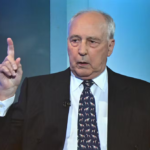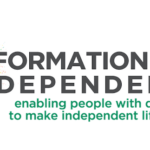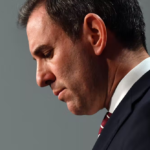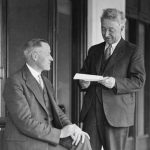Leading schools in lockdown
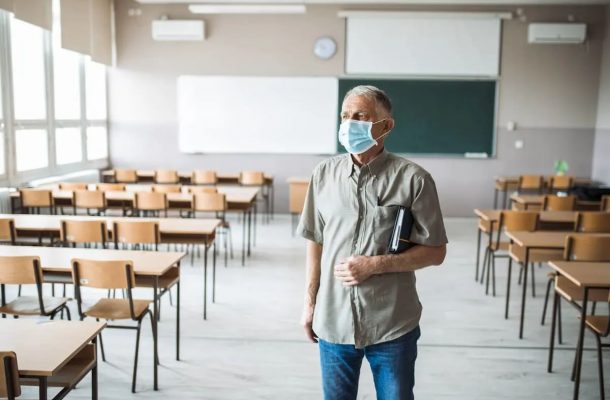
Schools have been through the most turbulent times over the past 18 months.
At the mercy of the impact that COVID-19 has had on their communities, they’ve moved in and out of remote learning programs, made significant rearrangements to their spaces and practices to ensure social distancing and hygiene measures, and had constant changes to planned academic and social events that mark significant moments throughout the year (think exams, graduations, open nights).
The scope and impact of the disruption and uncertainty have been unprecedented in the history of schooling.
Right now, hundreds of schools have just returned to term three under remote learning arrangements due to the Sydney lockdown in NSW, and Victorian students had barely begun term three before being forced home amid the state’s fifth lockdown.
While these schools are dealing with lockdowns, many other school leaders and teachers across the country are holding their breath as they start term three, hoping plans for learning and social activities won’t be in vain if the pandemic once agin takes hold in their communities.
Last year, I spoke with eight school leaders in Melbourne during the lengthy lockdown periods in 2020. This research showed how the circumstances of uncertainty and disruption to normal modes of practice influenced their work.
In the absence of usual processes, school leaders engaged in rapid sense-making and adaptation to keep up with the pace of change. I spoke to them in the middle of 2020, when less was known about the health, economic, social and educational impacts of the virus, and everyone was scrambling to find solutions to unprecedented problems.
I asked them about the ways their work in schools had been impacted by these drastic changes, and they identified several key areas.
Connection to community
Leading into, through, and out of lockdowns heightened leaders’ relationships with their communities. They spoke of how they were turned to as calm and authoritative voices during times of confusion, especially in those weeks just before and at the start of the first lockdowns, and the initiation of remote schooling.
What you realise really quickly in times like this is that you’re actually a community leader. What I mean by that is outside of sort of a political voice that our members of parliament have. It seems that the next voice that many community members go to, particularly families, is to school leaders. – Danni, government secondary school principal
As the lockdown rolled on, and the complexities of social, economic and welfare issues permeated the schools, the leaders described how they needed to draw on deep wells of optimism, and display a confident, resilient stance for their communities.
My role is as a community leader, and reminding myself that I’m leading a community of people – the families, the staff and their families – and ensuring that I’m doing the best to spread a positive attitude. The glass is half-full. We will get through this. – Frank, government primary school principal
The participants felt that in many ways the shared experience of the crisis strengthened their communities. There was a sense of “we’re all in this together” (Katrina, government primary school principal) as the school worked together to find solutions and to support those who were struggling the most.
Crucial communication
Finding ways to communicate within the remote learning and socially distanced circumstances was a key focus for these leaders. It was essential that new modes and schedules were developed to disseminate key information, and to keep community members connected.
In the earliest weeks, regular and clear communications were vital. School leaders were collating and interpreting information from many sources, and their aim was always to share it in ways that decreased ambiguity and confusion.
Clarity of communication was really important … We set up the communication channels, because there was so much confusion, and so many questions … We just took direction from whatever came out, and kept everything clear. A single source of truth. – Kate, independent school head
These leaders also found that by being honest about what they did and didn’t know was important.
We just took a stance for our school of just being open and honest, and transparent, right from the very start … That’s what I found was the biggest thing, really, just that regular, really regular communication, and just really honest. I said to parents, ‘As soon as I know, you’ll know’, and that’s what I did, and I got a lot of positive feedback from parents around that. They felt that they knew everything, because we were being so open with them. – Katrina, government primary school principal
They found themselves explaining that their decisions were based on current circumstances, and that adjustments might be necessary as the situation developed.
They found most people understood that with the urgency of the crisis unfolding, a pretty good decision in time (that might need later adjustment) was better than waiting too long.
I just decided I could put my own message out, and then if I had to change it when [more information] came out, I would change it. And I think that’s just being on the forefront of communication. I think because everyone was, ‘We’re all in together, we’re all learning’, I think it showed everyone that we’re all learners in a school. – Narelle, government primary school principal
Care and compassion
The strongest message from all those I spoke to was just how all-encompassing and important wellbeing became during these challenging times. They explained how amplified the caring and compassionate aspects of leading became.
They developed systems and practices to “check in” with students, families and staff.
They became acutely aware of those who were struggling, and found the best solutions possible to help them. This included things such as arranging food hampers for families without income, supporting teachers with young children at home to manage their online teaching commitments, or making sure to have a one-on-one conversation every few days with a staff member who lived alone.
They shared that their interactions through these times were not necessarily about solving problems or fixing issues, but rather offering space for teachers, parents and students to be heard.
One said this regarding the teachers he was supporting:
There were a lot of conversations where teachers really just spoke about how tiring it is, and ultimately you really just need to listen to that … and acknowledging, and saying, “Make sure that when you do get that opportunity, you do take a break, or do something that you really love once a day”, or whatever it might be. – Kaleb, independent school head
This time to connect and acknowledge it was OK to find things challenging was part of the message many school leaders wove into their work at this time.
They reverted to the core safety, wellbeing and relational purposes of schools. They understood that everyone was finding their way in unfamiliar times, as Danni explained in relation to her teaching staff:
Looking after the wellbeing of staff in these unique times is central to the success of what schools were trying to achieve … That we humanise what they do again, and they’re not some sort of robots on a device that can just be turned on and off … They’re experiencing the same level of angst that a whole society is and, you know, really allowing that “humanness” to be part of their practice, and talk about it. – Danni, government secondary school principal
The price, possibilities, and potential
School leaders identified the workload and emotional challenges they, and others, experienced throughout the lockdowns.
I’d say the last three months is the hardest I’ve ever worked … because they were just emotionally draining… It’s that constant switched-on. We’ve been switched-on, switched-on, switched-on, switched-on. Worrying about staff, students, parents, education, the department, the community, everything, the whole time. Make a decision, make a decision, worry about this person, phone that person. It’s been very reactionary, which is not the way most of us work in this role. So, I think that’s the fatigue that I’m feeling – my brain needs to switch off now, and my body needs to rest. – Katrina, government primary school principal
Despite this, leaders expressed positivity and hopefulness when asked what had been learnt from the experiences of schooling in 2020. They noted the emergence of a new attitude towards change.
Despite exhaustion from the pace and pressure of remote learning changes, the experiences of teachers had expanded perceptions of what was possible in their work.
When I spoke to Dave, in between the two major Melbourne lockdowns, he described that teachers were excited about this new sense of potential:
It feels like now actually there’s a bunch of people that have come back and gone, “Actually, I want to do some stuff now”. I feel like there’s a little bit more appetite for it … A lot of people have come back and they’ve been like, “I’ve been in my hole this whole time, and I haven’t been able to get anything going”, and their desire to push change in school has now built up. – Dave, government secondary school assistant principal
This potential was complemented by the relationships that had developed with families, and the acceptance of change. Together, school leaders, teachers, students and parents had shaped the home learning programs through a process of implementation, feedback and adaptation.
This made schooling more visible to families, and also developed a culture of trust that had grown through the remote learning experiences.
School leaders described how this offered potential for future, more innovative and agile practices in their schools.
There’s been a real flurry of people wanting to try other things, and it being OK. Implement something, [and] if it doesn’t work, pull it back or you modify it. And it’s that agile thinking that has really come to the forefront within all the staff. – Narelle, government school primary principal
All these school leaders described the complexity and importance of their work during the COVID-19 Melbourne lockdowns of 2020.
To lead their communities through it, they prioritised compassionate, humanising goals that grounded everything they did. They made sense in confusing times, and they communicated in ways that were reassuring and positive, as well as open and honest.
Promisingly, the leaders underlined the resilience of our school communities, as they optimistically looked to a post-pandemic future that will build on what was learnt through the unprecedented disruptions.
This piece is a summary of a recently-published paper, ‘Leading in lockdown: Community, communication and compassion in response to the COVID-19 crisis’. It was published by Lens.
Fiona is a lecturer in educational leadership at Monash University. Her current research interests include leadership for social cohesion, community engagement, and student agency in schools.







